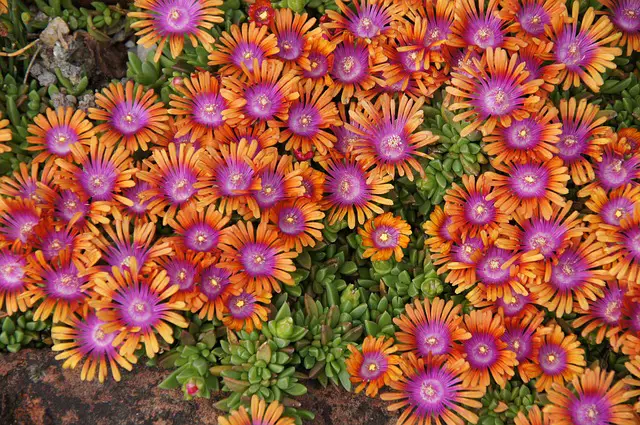Welcome fellow plant lovers! Our popular succulent list is a treasure for enthusiasts like you. From the sturdy and striking Agavaceae to the soft, touchable leaves of Aloaceae, and the delightful cascades of Rhipsalis
Cactaceae (Cactus Family)
The Cactaceae family, or Cactus Family, includes a wide variety of plants known for their spiky skin and ability to store water. They come in many shapes and sizes, from small, round ones to tall ones. Cacti are really easy to care for because they need very little water and love sunny spots, making them great for people who want low-maintenance plants.
Christmas Cactus (Schlumbergera):
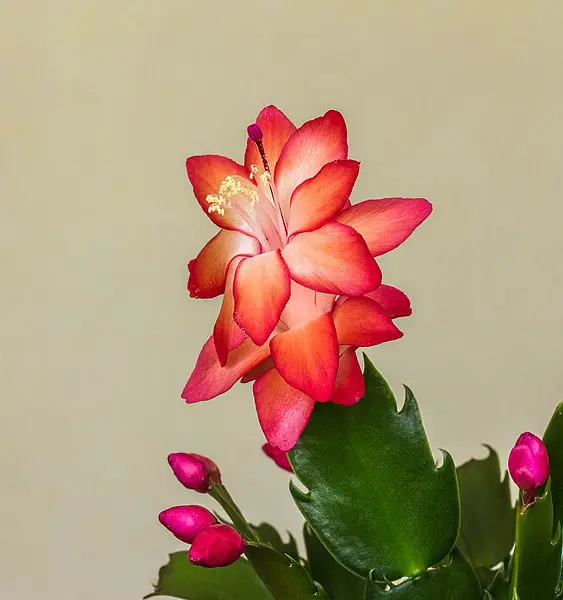
Appearance: Features segmented, flat leaves and blooms in winter with pink, red, white, or purple flowers.
Popularity Reasons: Loved for its seasonal blooms and ease of care, often becoming a cherished, long-living family plant.
Growing Tips: Prefers bright, indirect light, higher humidity, and cooler temperatures. Water when the top inch of soil is dry, especially during blooming.
Bunny Ear Cactus (Opuntia microdasys):
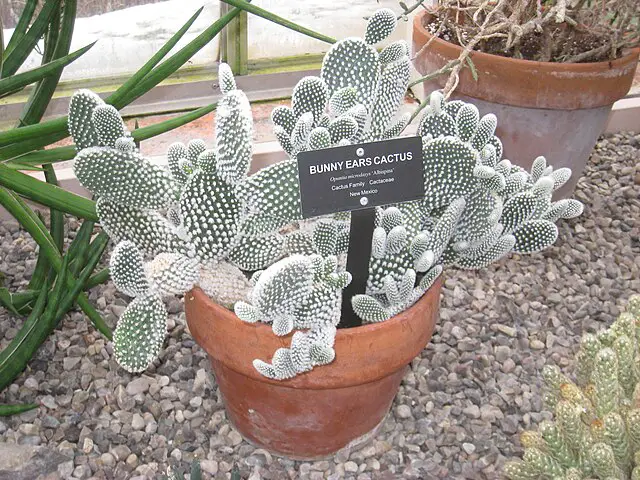
Appearance: Characterized by its pad-like segments resembling bunny ears, covered with small, fuzzy glochids.
Popularity Reasons: Its playful shape and ease of care make it a favorite among beginners.
Growing Tips: Requires full sun or bright light. Water only when soil is completely dry, and use well-draining soil to avoid root rot. Read more about Bunny Ear Cactus.
Star Cactus (Astrophytum):
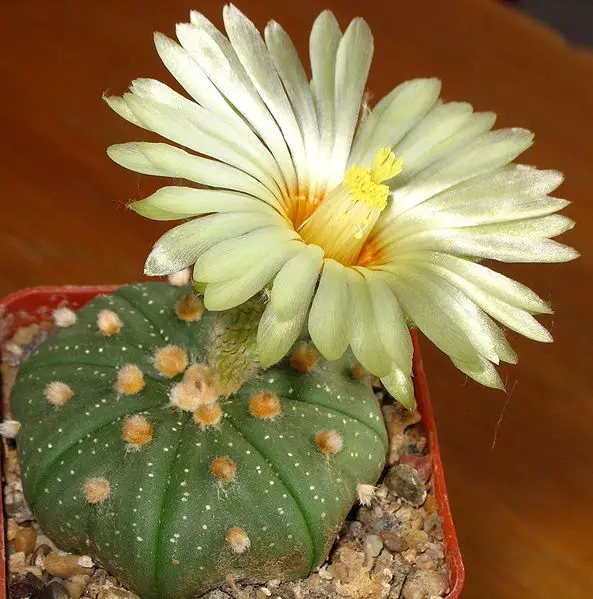
Appearance: Displays a globular or columnar shape with ribs forming a star pattern, and white flecks on the surface.
Popularity Reasons: Appreciated for its sculptural beauty and slow growth, ideal for collectors.
Growing Tips: Prefers bright light and some direct sun. Water moderately during the growing season and reduce in winter.
Crassulaceae
The Crassulaceae, often known as the Stonecrop family, is a delightful group of succulents cherished by gardeners for their diverse and captivating forms. This family is celebrated for its exceptional ability to thrive in dry conditions, thanks to their water-storing leaves. A notable feature of Crassulaceae is their exquisite rosette formations, seen in popular genera like Echeveria and Sempervivum.
Plants like the Jade Plant (Crassula ovata) and the charming Burro’s Tail (Sedum morganianum) are exemplary of the family’s versatility and beauty. Crassulaceae species range from ground-hugging sedums to towering tree-like succulents, offering a myriad of textures and colors. They are particularly favored by hobbyists for their ease of care and the striking aesthetic they bring to both indoor and outdoor succulent collections.
Echeveria:
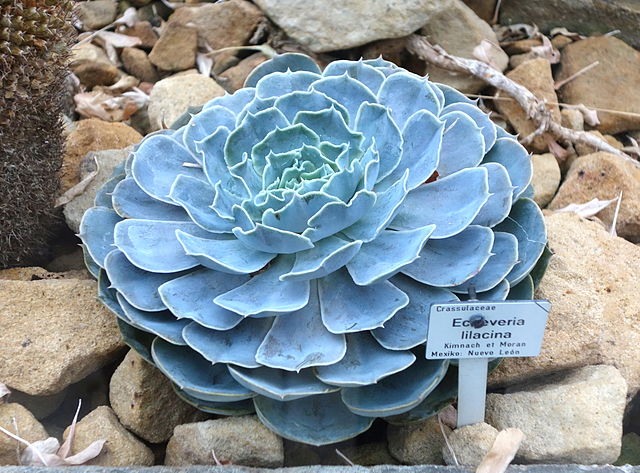
Appearance: Known for its symmetrical rosette shape and a variety of colors like greens, blues, purples, and pinks.
Popularity Reasons: Its photogenic form makes it perfect for decorative planters and succulent arrangements, easy to propagate.
Growing Tips: Enjoys bright, indirect light. Water when the soil is dry to the touch. Avoid letting water sit in the rosette to prevent rot.
Jade Plant (Crassula ovata):
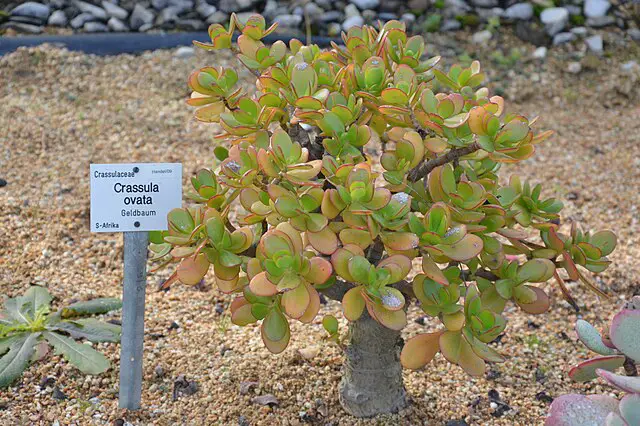
Appearance: Has thick, woody stems with glossy green, oval-shaped leaves, sometimes with a red tinge on the edges.
Popularity Reasons: Known as a symbol of good luck, valued for its longevity and tree-like growth over time.
Growing Tips: Prefers bright light and occasional watering when the soil is dry. Well-draining soil is essential.
Burro’s Tail (Sedum morganianum):
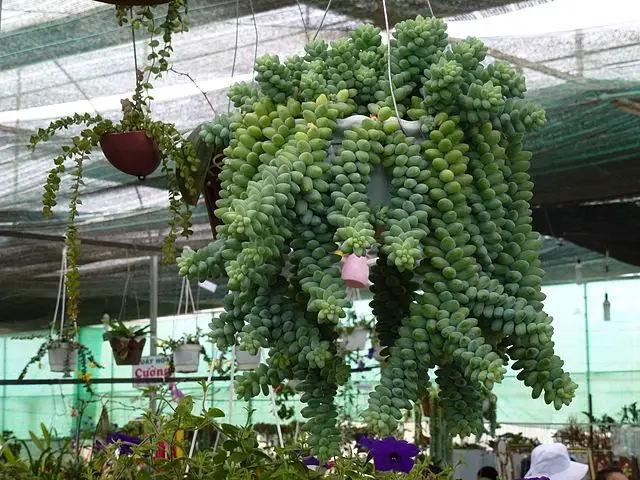
Appearance: Features trailing stems densely packed with fleshy, teardrop-shaped leaves.
Popularity Reasons: Its cascading growth habit creates a dramatic effect, perfect for hanging baskets.
Growing Tips: Best in bright light, with sparse watering. Ensure good drainage and avoid overwatering.
Aizoaceae (Ice Plant Family)
The Aizoaceae, or Ice Plant Family, is known for its bright flowers and thick leaves. This family includes plants like Lithops, also known as “Living Stones,” and the colorful Baby Sunrose. They are easy to grow and great for dry, sunny spots, making them popular with people who love colorful, low-care plants.
Lithops (Living Stones):
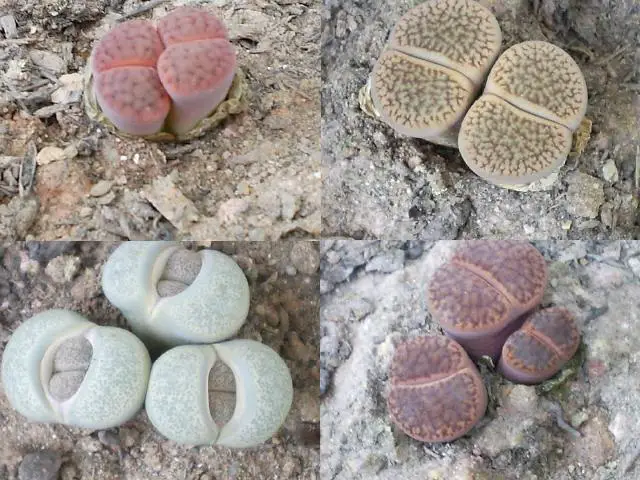
Appearance: Resembles stones or pebbles, with a variety of colors and patterns to blend in their rocky habitats.
Popularity Reasons: Fascinating for their stone-like appearance and minimal water needs, perfect for small spaces.
Growing Tips: Requires a sunny spot. Water sparingly, especially in winter. Avoid water during their dormant season in summer.
Baby Sunrose (Aptenia cordifolia):
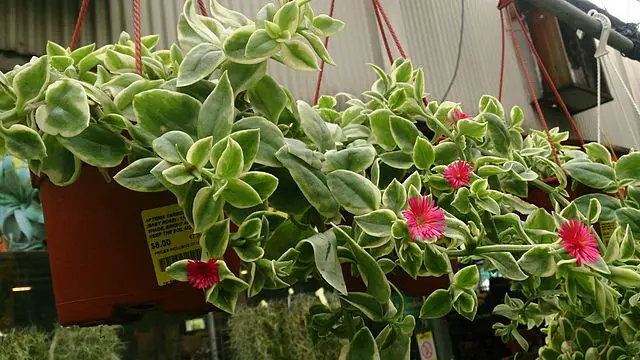
Appearance: Glossy, heart-shaped leaves with bright, daisy-like pink or red flowers.
Popularity Reasons: Its fast growth and vibrant flowers make it a lively addition to any collection.
Growing Tips: Thrives in bright light and regular watering. Tolerates various conditions, both indoors and out.
Agavaceae
The Agavaceae family includes plants like Agave and Yucca, known for big, strong leaves that grow in a circle pattern. They are popular for their big, striking shapes and are easy to look after, needing just a bit of sun and not too much water.
Century Plant (Agave americana)
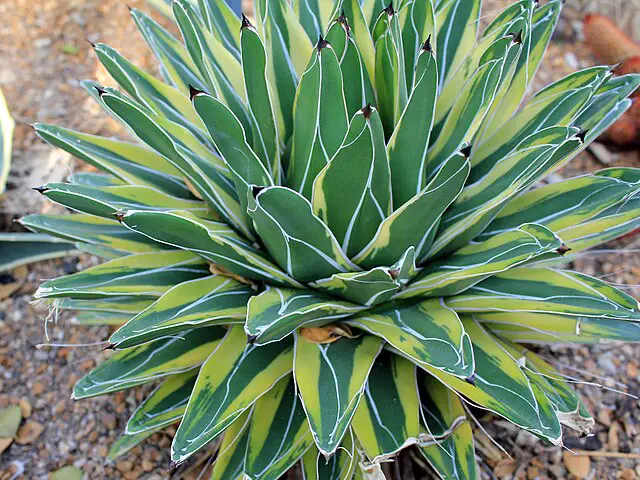
Appearance: Large rosette of blue-green leaves with spiky margins.
Popularity Reasons: Its grand scale and sculptural quality make it a focal point in gardens and large indoor spaces.
Growing Tips: Needs full sun and well-drained soil. Water infrequently and be cautious of sharp edges.
Soap Tree Yucca (Yucca elata)
Appearance: Slender trunk with pale green leaves and bell-shaped flowers.
Popularity Reasons: Its elegant form is well-suited for modern and minimalist decors. The flowers add a charming touch.
Growing Tips: Prefers full sun. Drought tolerant, water sparingly and ensure well-draining soil.
Blue Agave (Agave tequilana)
Appearance: Attractive blue-gray leaves, typically forming a large rosette.
Popularity Reasons: Beyond its role in tequila production, it’s sought after for its striking blue foliage and bold form.
Growing Tips: Thrives in full sun with well-draining soil. Water sparingly and avoid cold temperatures.
Joshua Tree (Yucca brevifolia)
Appearance: Unique, tree-like shape with spiky leaves, indigenous to the Mojave Desert.
Popularity Reasons: Its distinctive, wild appearance makes it a statement piece for large spaces or desert landscapes.
Growing Tips: Prefers full sun and dry conditions. Water infrequently and provide a sandy, well-draining soil.
Aloaceae
The Aloaceae family, where Aloe Vera belongs, is famous for plants with thick, juicy leaves. They are well-known for being easy to grow and often used for their soothing gel. These plants like a sunny spot and don’t need much water.
Aloe Vera (Aloe barbadensis miller)
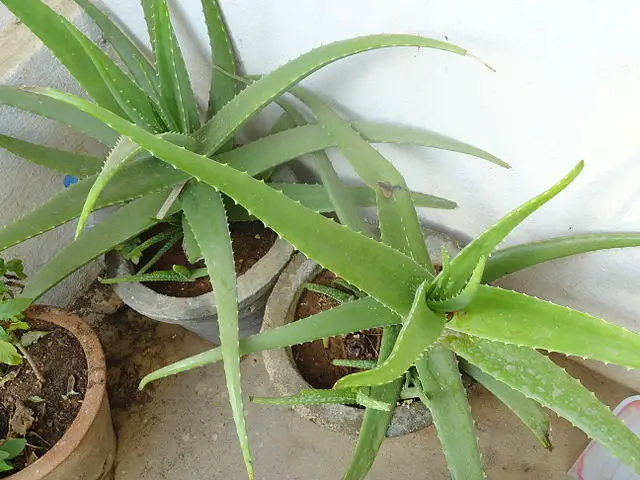
Appearance: Thick, fleshy, green to grey-green leaves with white flecks.
Popularity Reasons: Celebrated for its medicinal properties, especially the soothing gel from its leaves.
Growing Tips: Prefers bright, indirect sunlight and well-draining soil. Water deeply but allow the soil to dry between waterings.
Lace Aloe (Aloe aristata)
Appearance: Small, ornamental aloe with dense rosettes of speckled leaves.
Popularity Reasons: Its compact size and decorative leaves make it perfect for small indoor gardens or as a desk plant.
Growing Tips: Enjoys bright light but not direct sunlight. Water sparingly and use well-draining soil.
Spiral Aloe (Aloe polyphylla)
Appearance: Notable for its unique spiral pattern of dense, green-blue leaves.
Popularity Reasons: Highly sought for its stunning geometric form, a rare and prized specimen among succulent collectors.
Growing Tips: Requires well-draining soil, bright light, and cool temperatures. Avoid overwatering.
Tiger Aloe (Aloe variegata)
Appearance: Short, variegated leaves in a rosette pattern, resembling tiger stripes.
Popularity Reasons: Its striking variegated patterns and manageable size make it a favorite among aloe enthusiasts.
Growing Tips: Prefers bright, indirect light. Water moderately, allowing soil to dry out between waterings.
Asphodelaceae
The Asphodelaceae family is known for small, sturdy plants like Haworthia, which have thick leaves often growing in a rosette shape. They’re easy to care for, liking some sun and little water, making them great for indoor gardens.
Haworthia
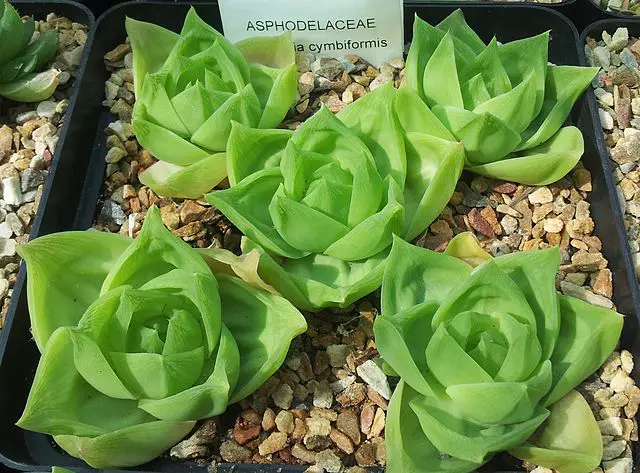
Appearance: Small, rosette-forming succulents with translucent, often patterned leaves.
Popularity Reasons: Perfect for small spaces and terrariums, they’re admired for their subtle beauty and ease of care.
Growing Tips: Thrives in indirect light. Water moderately, allowing soil to dry out between waterings.
Gasteria
Appearance: Characterized by thick, warty leaves, often variegated or spotted.
Popularity Reasons: Their unique texture and form make them an interesting addition to any succulent collection.
Growing Tips: Prefers partial shade. Water sparingly and provide well-draining soil.
Euphorbiaceae
The Euphorbiaceae, or spurge family, is a diverse group of plants ranging from herbs to trees. They are notable for their milky, often toxic sap. This family includes familiar plants like poinsettias and rubber trees. They vary in appearance and are found worldwide, but many have small, inconspicuous flowers. While ecologically and economically important, they should be handled carefully due to their sap.
Crown of Thorns (Euphorbia milii)
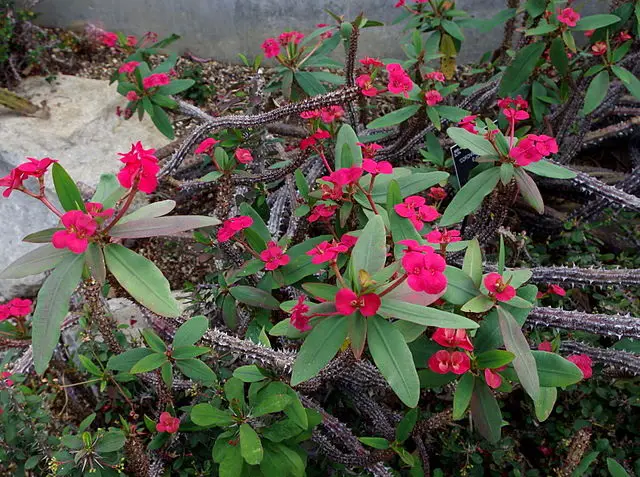
Appearance: Small, spiny shrub with bright bracts, resembling flowers.
Popularity Reasons: Its year-round colorful bracts and low maintenance make it a popular choice for bright indoor areas.
Growing Tips: Prefers bright light. Water when soil is dry. Be cautious of the sap, which is toxic and can irritate skin.
Pencil Cactus (Euphorbia tirucalli)
Appearance: Tall, with thin, green, pencil-like branches.
Popularity Reasons: Its unique, minimalistic look is great for adding a touch of greenery to modern spaces.
Growing Tips: Requires bright light. Water sparingly and protect from cold temperatures.
African Milk Tree (Euphorbia trigona)
Appearance: Cactus-like, with upright, ridged stems and occasional small leaves.
Popularity Reasons: Its easy care and striking form make it a favorite for those seeking a low-maintenance yet visually interesting plant.
Growing Tips: Needs bright, indirect light. Water when the soil has dried out.
Silverthorn (Euphorbia leucocephala)
Appearance: Bushy shrub with small leaves and clusters of white, fragrant flowers.
Popularity Reasons: Its fragrant blooms and lush foliage make it a delightful addition to any garden or indoor space.
Growing Tips: Prefers bright, indirect light and moderate watering, ensuring well-draining soil.
Rubber Plant (Euphorbia elastica)
Appearance: Not an actual rubber tree, but a euphorbia with large, glossy, dark green leaves.
Popularity Reasons: Popular for its easy care and ability to purify indoor air.
Growing Tips: Thrives in bright, indirect light. Water moderately, allowing the topsoil to dry out between waterings.
Apocynaceae
The Apocynaceae, or dogbane family, is a group of flowering plants that includes herbs, shrubs, and trees. These plants are known for having milky sap and often produce beautiful, fragrant flowers. Some popular members are the periwinkle and oleander. They are found in various environments around the world. Many have medicinal uses, but be cautious as some can be toxic if not handled properly.
Desert Rose (Adenium obesum)
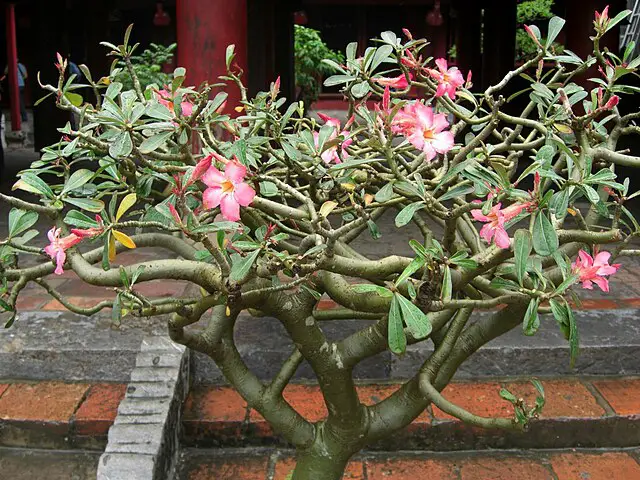
Appearance: Known for its thick, caudex trunk and beautiful, trumpet-shaped flowers in shades of pink, red, and white.
Popularity Reasons: Its unique bonsai-like appearance and vibrant blooms make it a favorite among plant lovers.
Growing Tips: Prefers full sun and well-draining soil. Water sparingly, especially in winter.
String of Pearls (Senecio rowleyanus)
Appearance: Features trailing stems with small, spherical leaves resembling a string of pearls.
Popularity Reasons: Its unique, cascading form makes it perfect for hanging baskets and as a conversation piece.
Growing Tips: Thrives in bright, indirect light. Allow the soil to dry out between waterings.
Madagascar Periwinkle (Catharanthus roseus)
Appearance: Small, glossy leaves with five-petaled flowers in white, pink, or purple.
Popularity Reasons: Known for its medicinal properties and charming flowers, it’s a common choice for gardens and pots.
Growing Tips: Prefers full sun to partial shade. Keep the soil moist but not waterlogged.
Portulacaceae
The Portulacaceae family includes plants like Portulaca and Moss Rose. They have small, colorful flowers and are tough and easy to care for. These plants love the sun and are great for bright, dry spots.
Portulaca (Purslane)
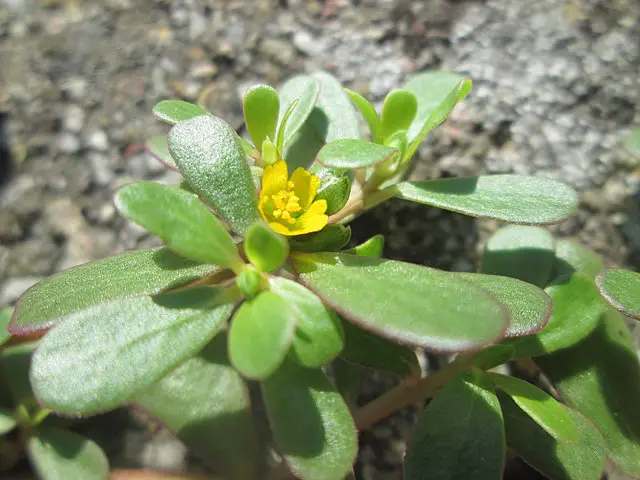
Appearance: Succulent leaves and stems with vibrant flowers in yellow, pink, orange, or red.
Popularity Reasons: Its drought-tolerant nature and colorful flowers make it great for sunny, dry spots.
Growing Tips: Thrives in full sun and well-draining soil. Water moderately, allowing the soil to dry out between waterings.
Moss Rose (Portulaca grandiflora)
Appearance: Fleshy leaves with bright, rose-like flowers in various colors.
Popularity Reasons: Loved for its easy care and continuous summer blooming, perfect for ground cover or containers.
Growing Tips: Requires full sun and well-drained soil. Water sparingly.
Rock Purslane (Calandrinia spectabilis)
Appearance: Fleshy leaves with tall stalks bearing large, magenta flowers.
Popularity Reasons: Its showy blooms and resilient nature make it a great choice for adding a pop of color.
Growing Tips: Prefers full sun and well-drained soil. Drought tolerant once established.
Gasteriaceae
The Gasteriaceae family is known for plants like Gasteria, which have thick, bumpy leaves. These plants are small, making them perfect for growing indoors. They are easy to look after, needing just a little light and not much water.
Gasteria
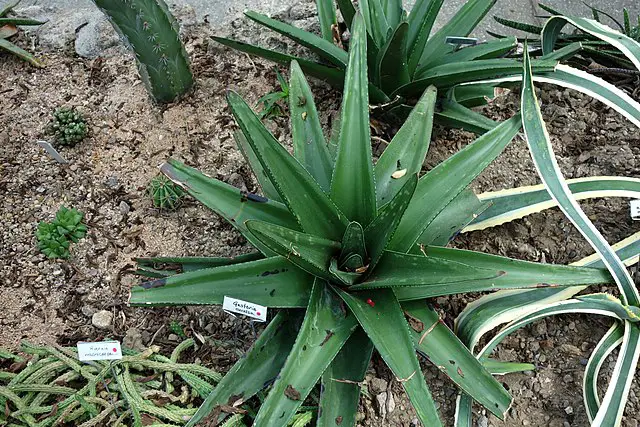
Appearance: Thick, warty leaves often in a rosette form, varying in size from small to large.
Popularity Reasons: Their unique texture and ease of care make them suitable for indoor collections and small gardens.
Growing Tips: Prefers partial shade or indirect light. Water moderately, allowing the soil to dry out between waterings.
Ox Tongue (Gasteria bicolor)
Appearance: Long, tongue-shaped leaves with a rough texture, green with white spots.
Popularity Reasons: Its distinctive leaf texture and form make it an interesting and easy-to-care-for houseplant.
Growing Tips: Does well in low to medium light. Water sparingly and ensure well-draining soil.
Lawyer’s Tongue (Gasteria glomerata)
Appearance: Compact, dark green leaves with white spots, forming a dense cluster.
Popularity Reasons: Ideal for small spaces, it’s appreciated for its decorative leaves and low maintenance.
Growing Tips: Prefers bright, indirect light. Water moderately, letting the soil dry out between waterings.
Sedeveria
Sedeveria is a group of plants created by mixing Sedum and Echeveria. These plants have pretty, colorful leaves that grow in a tight pattern like a rosette. They’re easy to grow and great for people who like plants that don’t need a lot of care. They do well in sunny spots and need only a little water.
Sedeveria ‘Blue Mist’:
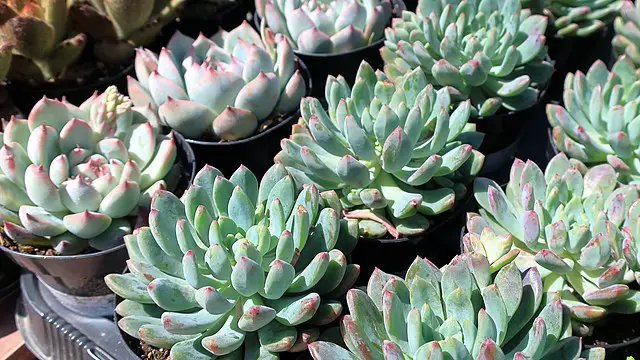
Appearance: This hybrid has powdery blue-green leaves with a rosette shape, resembling Echeveria.
Popularity Reasons: Its attractive color and easy-care nature make it popular for succulent gardens and arrangements.
Growing Tips: Prefers bright, indirect sunlight. Water when the soil is dry to the touch and ensure well-draining soil.
Sedeveria ‘Harry Butterfield’:
Appearance: Known for its large rosettes of thick, fleshy leaves that are green with red tips.
Popularity Reasons: Its striking color contrast and robust growth habit make it a favored choice.
Growing Tips: Thrives in well-lit areas with some direct sun. Allow soil to dry between waterings.
Sedeveria ‘Jet Beads’:
Appearance: Features small, bead-like leaves that turn dark bronze to jet black in full sun.
Popularity Reasons: Its unique coloring and compact form are appealing for collectors and as a ground cover.
Growing Tips: Requires full sun to partial shade for best color. Water moderately, ensuring good drainage.
Senecio
The Senecio family includes plants like the String of Pearls and Blue Chalksticks. They are known for their unique shapes – some have long trailing stems, others have blue or green stick-like leaves. These plants are popular because they’re easy to care for, needing some sunlight and only a bit of water now and then.
Blue Chalksticks (Senecio serpens):
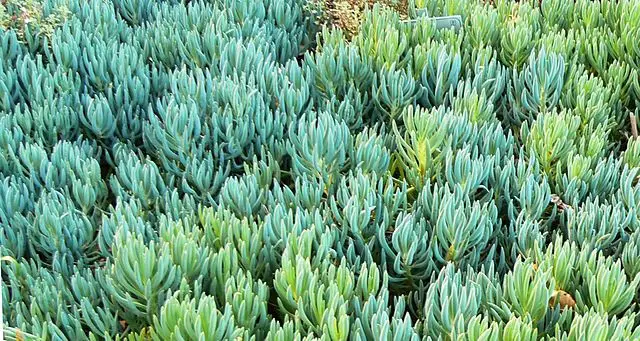
Appearance: Has powdery blue, finger-like leaves, forming a low, spreading mat.
Popularity Reasons: Its striking blue hue and ground-covering ability make it popular in succulent gardens and as a container plant.
Growing Tips: Prefers full sun to partial shade. Drought tolerant, water sparingly.
Senecio haworthii (Woolly Senecio):
Appearance: Notable for its cylindrical, woolly white leaves, giving it a distinctive texture.
Popularity Reasons: Its unusual appearance and texture are highly valued by succulent enthusiasts.
Growing Tips: Needs bright light and well-drained soil. Water sparingly and avoid getting leaves wet.
Senecio radicans (String of Bananas):
Appearance: Features trailing stems with banana-shaped, succulent leaves.
Popularity Reasons: Its playful, cascading vines are great for hanging baskets, adding a whimsical touch.
Growing Tips: Prefers bright, indirect light. Water when soil is dry, and ensure good drainage.
Kalanchoe
Kalanchoe is a family of plants with thick leaves and often bright flowers. They include types like Kalanchoe blossfeldiana, known for its colorful blooms, and the Panda Plant, with soft, furry leaves. These plants are easy to take care of, needing some light and only occasional watering. They’re great for adding a splash of color indoors.
Kalanchoe blossfeldiana:
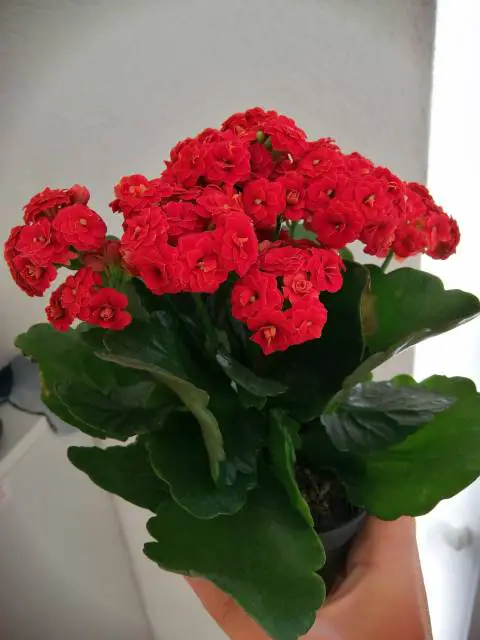
Appearance: Small, bushy plant with glossy green leaves and clusters of bright, long-lasting flowers.
Popularity Reasons: Its vibrant flowers, available in many colors, make it a popular choice for indoor color, especially in winter.
Growing Tips: Prefers bright, indirect light. Water moderately, allowing the soil to dry out between waterings.
Panda Plant (Kalanchoe tomentosa):
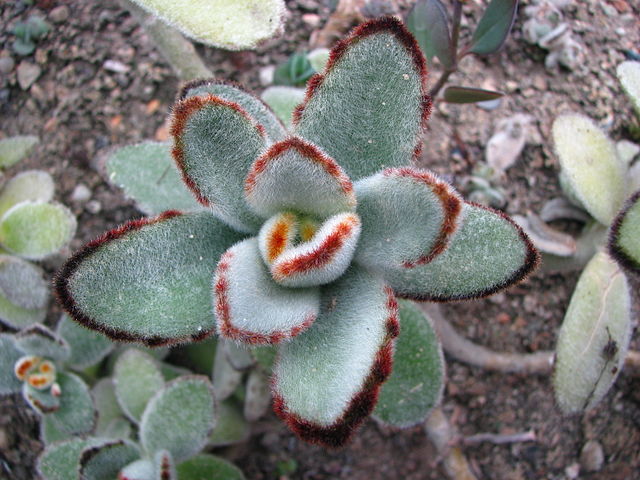
Appearance: Fuzzy leaves covered in tiny hairs, giving it a soft, velvety texture. The leaves are gray-green with brown spots on the edges.
Popularity Reasons: Its unique, fuzzy leaves and easy care make it a favorite for indoor succulent collections.
Growing Tips: Thrives in bright light. Water sparingly, and ensure well-draining soil to prevent root rot.
Kalanchoe luciae (Paddle Plant):
Appearance: Large, rounded, paddle-shaped leaves that can turn red along the edges under bright sunlight.
Popularity Reasons: Known for its dramatic foliage and architectural form, it’s a striking addition to any collection.
Growing Tips: Requires bright light for best coloration. Water sparingly, particularly in winter.
Kalanchoe pumila (Flower Dust Plant):
Appearance: Features small, silver-gray leaves with a powdery coating and pinkish-purple flowers.
Popularity Reasons: Its delicate flowers and attractive foliage are a draw for succulent lovers.
Growing Tips: Prefers bright, indirect sunlight. Water moderately, allowing the soil to dry out between waterings.
Sempervivum (Hens and Chicks)
Sempervivum, also known as Hens and Chicks, is a family of plants with thick leaves that grow close together in a rosette shape. They are tough and can handle cold weather. These plants are easy to care for, needing just a bit of sun and not too much water, and they’re great for rock gardens or containers.
Sempervivum tectorum:
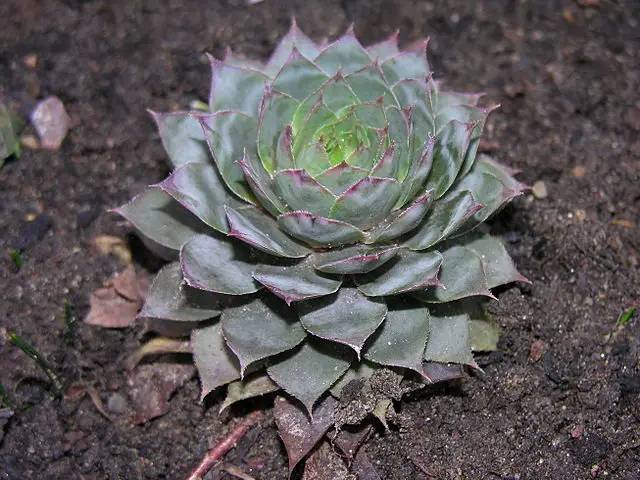
Appearance: Rosette-forming succulent with green leaves often tipped with red or purple.
Popularity Reasons: Its hardiness and the charming habit of producing numerous offsets (chicks) make it a favorite for rock gardens and containers.
Growing Tips: Prefers full sun to partial shade. Drought tolerant; water sparingly and provide well-draining soil.
Sempervivum arachnoideum (Cobweb Houseleek):
Appearance: Characterized by a web of white filaments across the rosettes, giving a cobwebbed appearance.
Popularity Reasons: The unique cobweb covering and ease of care make it a fascinating addition to succulent collections.
Growing Tips: Thrives in well-draining soil with full sun to partial shade. Water moderately, allowing soil to dry between waterings.
Sempervivum ‘Ruby Heart’:
Appearance: This variety has green leaves with deep ruby red tips.
Popularity Reasons: Its vibrant color contrast and low-maintenance care are appealing for decorative planting.
Growing Tips: Needs full sun for the best color. Well-drained soil is essential, with infrequent watering.
Graptopetalum
Graptopetalum is a family of plants with leaves that grow in a rosette shape, similar to Echeveria. Their leaves can change color in the sun, often turning pink or purple. These plants are easy to grow, preferring sunny spots and needing only a little water. They’re good for adding some color to your garden or home.
Graptopetalum paraguayense (Ghost Plant):
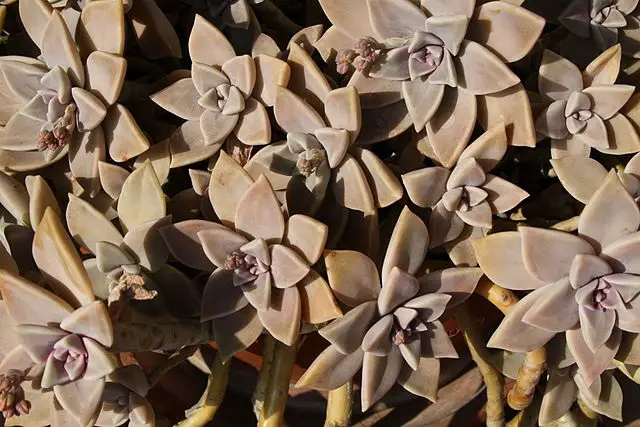
Appearance: Rosette-forming succulent with pale blue to pinkish leaves.
Popularity Reasons: Its pastel-colored leaves and easy propagation are highly valued in succulent gardens.
Growing Tips: Prefers bright, indirect light. Water when the soil is dry; overwatering can lead to root rot.
Graptopetalum superbum:
Appearance: Bears rosettes of purple to pink leaves, more vibrant with sun exposure.
Popularity Reasons: Known for its stunning leaf color and easy-care nature.
Growing Tips: Does best in full to partial sun. Requires well-drained soil; water moderately.
Graptopetalum mendozae:
Appearance: Compact rosettes with grey-green leaves.
Popularity Reasons: Its small size and attractive rosettes make it ideal for small pots and succulent arrangements.
Growing Tips: Enjoys bright, indirect light. Allow the soil to dry thoroughly between waterings.
Rhipsalis
Rhipsalis is a family of plants different from most cacti. They have long, trailing stems and grow well in more humid places. These plants are great for hanging baskets and don’t need a lot of sun or water, making them easy to care for indoors.
Rhipsalis baccifera (Mistletoe Cactus):
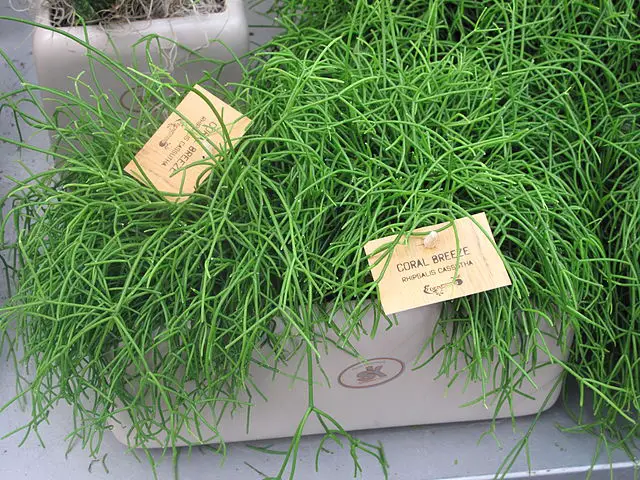
Appearance: Features long, slender, trailing stems with small, white berries.
Popularity Reasons: Its unique trailing habit and tolerance for lower light make it popular for hanging baskets and indoor use.
Growing Tips: Prefers bright, indirect light and a humid environment. Water regularly, keeping the soil consistently moist but not soggy.
Rhipsalis cereuscula (Coral Cactus):
Appearance: Resembles coral with its bushy, upright stems.
Popularity Reasons: Valued for its unusual shape and ease of care, ideal for adding texture to indoor plant collections.
Growing Tips: Grows well in indirect light. Keep the soil slightly moist, and provide good air circulation.
Rhipsalis pilocarpa:
Appearance: Has hairy stems and produces white, fragrant flowers followed by white berries.
Popularity Reasons: Its hairy stems and fragrant flowers are a unique feature among succulents.
Growing Tips: Prefers bright, indirect light. Water when the top inch of soil feels dry, and maintain higher humidity levels.

